It’s an hour until closing, but the Bobbie Sterne Health Center is bustling.
A mom rushes through the arched doorway of the brick building in the heart of Over-the-Rhine, just ahead of her slouching teenager. Another shepherds her three toddlers up the ramp and into the waiting area.
Some visitors arrive on foot, others by car. Some have medical insurance, many don’t. Visitors are often seeking medical care they’re unlikely to get anywhere else, from vaccines and routine dental checks to nutritional counseling and life-saving medication.
The Bobbie Sterne Health Center, which many know by its former name, the Elm Street Center, is a rare one-stop shop for medical and social services. It’s a crucial link to care that thousands of patients might otherwise go without.
But the center is in jeopardy.
Cincinnati health officials are considering relocation and consolidation plans that could shave at least an estimated $9.2 million off the cost of maintaining the clinics over the next five years.
Every plan, other than one that preserves the status quo, involves closing the Bobbie Sterne Health Center.
Health department officials say they’re committed to providing quality care and will continue to do so no matter what they decide to do with the existing clinics. They say that they don’t yet have a budget to shift or consolidate centers and their decisions will likely not come before the end of the year.
But residents who rely on their Elm Street Center say losing it would be devastating for them and the community.
Dave Elkins, executive director of the Jimmy Heath House, an organization that provides housing across the street for people experiencing homelessness, described “a constant flow of people.” “That clinic is busy all the time,” he said. “Particularly with families.”
“It’s for regular people,” said Georgia Keith, who’s lived in Over-the-Rhine for almost 60 years. “Parents take their children there.”
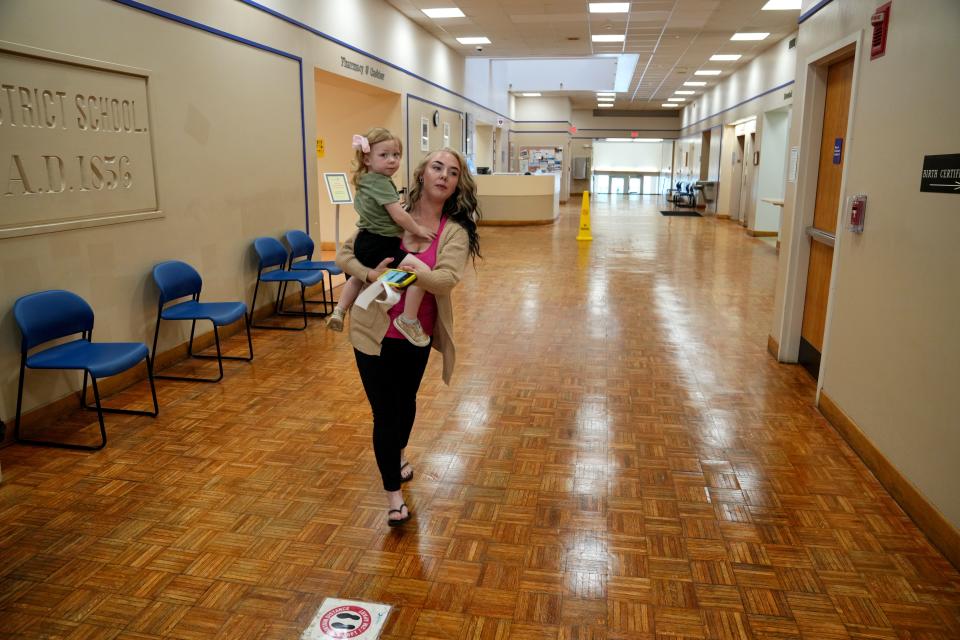
Craig Carrington, a 53-year-old resident of Northside, is one such parent. He said he took his daughter to Bobbie Sterne, when she attended the School for Creative and Performing Arts four blocks away, for regular checkups, a sprained ankle and everything in between.
“She got her shots there; she got her dental done there,” he recalled. “She got everything done there.”


Residents like Craig consider the Over-the-Rhine center to be a neighborhood fixture – but city health officials say money and demographics are working against it. They say most of the clinic’s patients come from outside Over-the-Rhine and the need for health care has shifted west, to East and West Price Hill and beyond.
None of the city’s plans call for building new clinics without shuttering existing clinics, including the one in Over-the-Rhine. One would leave the city with four clinics, two fewer than it has today.
That worries the people who rely on the Over-the-Rhine clinic every day for basic medical care.
The center primarily treats patients who are uninsured or on Medicaid, but it’s surrounded by houses worth close to a million dollars – and just a stone’s throw from TQL Stadium. With the rapid development of Over-the-Rhine, residents are uneasy, concerned they may be pushed aside to make way for new housing and businesses.
“This is one of the few clinics in this area,” said Robin Boles, who works at the front desk of the Jimmy Heath House. “I don’t see how that would be helpful to our neighborhood.”
Health centers serve 8% of Cincinnati’s population. Officials want to move them
The Bobbie Sterne Health Center is one of six community health centers run by the Cincinnati Health Department. Together, they served 25,000 patients last year, about 8% of the city’s population.
The centers are a backbone of primary care for Hamilton County’s uninsured and Medicaid residents, who combined, made up 87% of the clientele in 2023.
As the number of city health clinic patients has risen in the past decade, the share of those who are uninsured or on Medicaid has never dipped below 87%.
That’s the point, said Julie DiRossi-King, CEO of the Ohio Association of Community Health Centers, a nonprofit that’s helped expand the locations of health centers across the state.
“We serve everybody regardless of their insurance status or ability to pay,” she said. “All are welcome.”
Patients of the Bobbie Sterne Center won’t be the only ones affected by officials’ plans to move community health centers.
In February, Jensen Partners, a consultant hired by the health department to evaluate each of the centers, released a report proposing three relocation plans for the city to consider.
None involve the Bobbie Sterne Health Center staying in Over-the-Rhine.
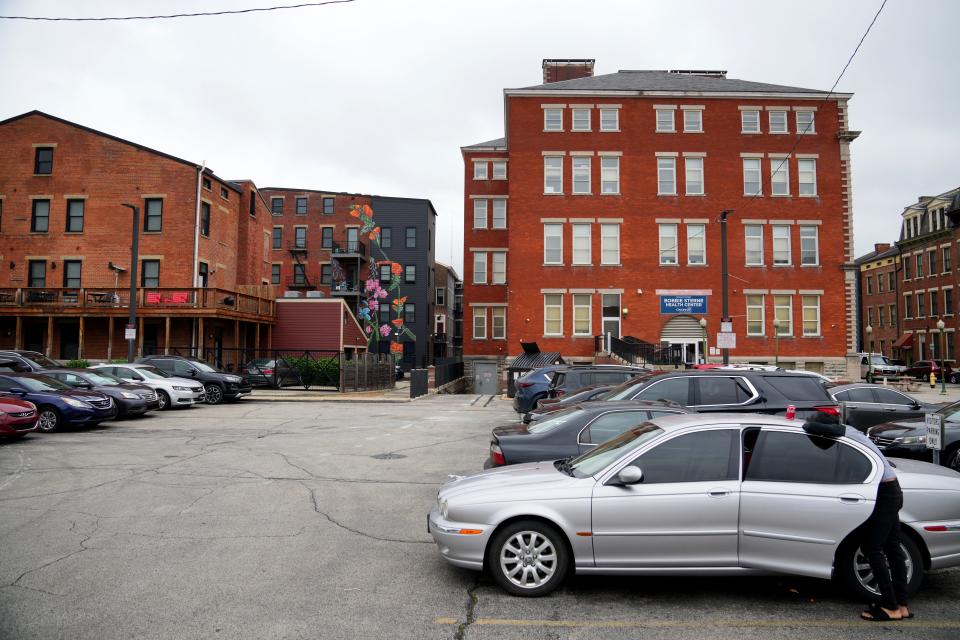

One plan recommends moving it to the West Side or shifting it further downtown, and moving the Millvale Health Center, currently in the North Fairmount/English Woods neighborhood, farther west.
Another involves shuttering the clinics in Lower Price Hill and Over-the-Rhine and opening a new one between the two neighborhoods, and similarly merging the Northside and Millvale health centers.
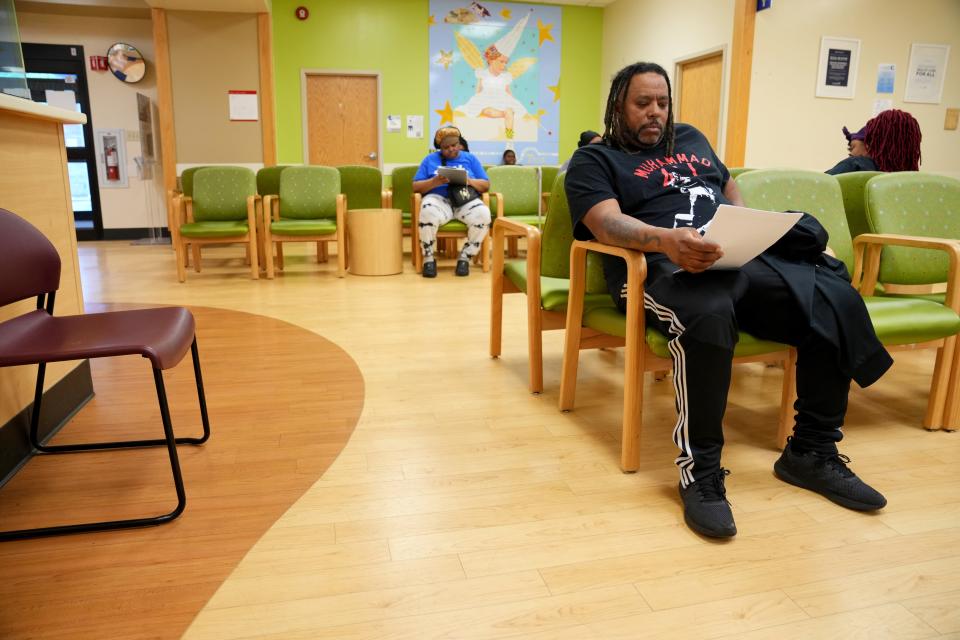

The last plan suggests shifting the Northside, Millvale and Lower Price Hill clinics to different buildings within the same neighborhood and moving the Bobbie Sterne Health Center west or downtown.
According to Jensen Partners, these changes will help move the health centers closer to the population they serve in the West Side, which is projected to grow even larger in the next decade.
Carrington, who visited Bobbie Sterne as a parent and now visits Millvale Health Center for his high blood pressure, is skeptical. He suspects any consolidation would make it harder for people who need medical care to get it.
“Merge is a nice way to say save money,” said Carrington. “Now it’s twice the volume, twice the weight.”
‘A nightmare of waiting, lack of care’
City health officials say they have not decided on if or when they’ll combine or close the community health centers.
But they say Jensen Partners’ recommendations were informed by data showing that the health centers draw significant numbers of patients from the West Side of Cincinnati – indicating the need for more care there.
“Only about 9% of the patients seen at Bobbie Sterne Health Center originate from the ZIP code in which it’s located,” Ashanti Salter, assistant to the health commissioner, said in an email to The Enquirer.
A little less than one third of patients come from ZIP codes west of Downtown, according to Salter, such as 45205, 45238 and 45211.
The Enquirer’s analysis of more than a decade’s worth of health department data shows this to be true.
Since 2014, ZIP code 45205, which covers parts of East and West Price Hill, has had the most patients visiting the city’s health department centers. The second and third highest numbers of patients hail from ZIP codes that cover areas that are even farther west: Delhi Township, Cheviot and Cincinnati’s Westwood neighborhood.
City officials may also want to shift the Bobbie Sterne Center west because the Price Hill Center, which is the farthest west of all six centers, might currently be the busiest, data provided by the health department show.
They showed Price Hill had the longest wait times, more than twice as long as any other center except Millvale.
Carrington thinks wait times will worsen if the city combines the Price Hill and Bobbie Sterne health centers.
“You merge them, it’s going to be a nightmare of waiting, lack of care,” he said.
The city’s relocation plans are still in their early stages, so if the clinic is moved out of the neighborhood, residents have no idea how far they’ll have to travel to the new one.
Combining the Price Hill and Bobbie Sterne centers, which are 2.5 miles away from each other, may not seem a big deal to anyone who owns a car.
But it makes a difference for patients who walk or take the bus to their appointments.
Dr. Madhulika Mamidi, Carrington’s doctor at the Millvale Health Center, said her patients often are without cars: A lot of them take the bus, while others walk.
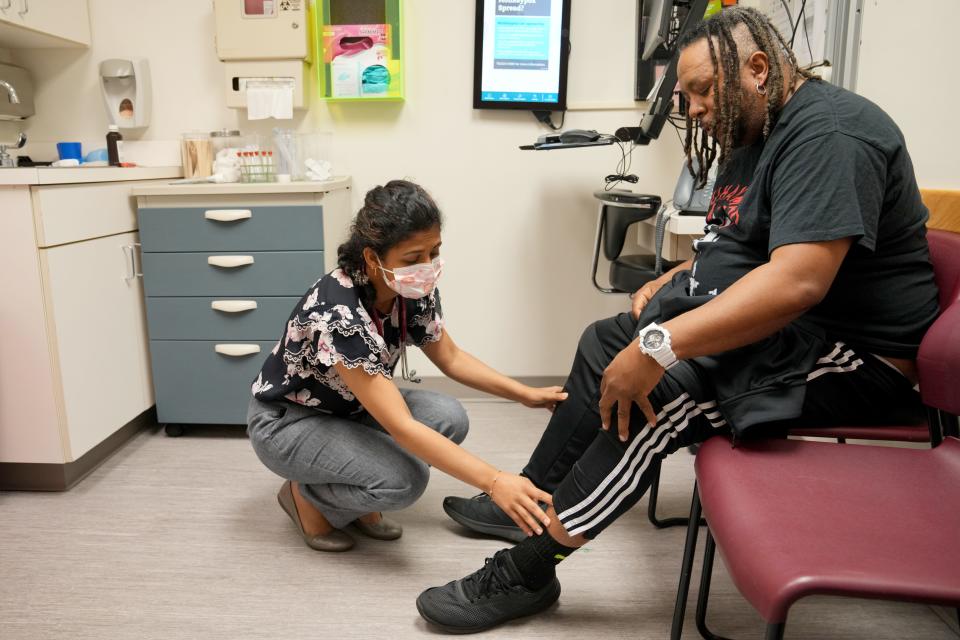

Keith knows this from the years she spent working for Cincinnati Public Schools as a school community coordinator, helping neighborhood families send their kids to school.
They relied on the Bobbie Sterne Center to get checkups and vaccinations required by schools.
“They still come to the clinic because they love their doctors or their dentists,” she said.
Keith has since retired, but she said the center remains a critical support for children who attend Rothenberg Preparatory Academy, an elementary school half a mile away.
“People can walk to Elm Street,” Keith said. “How many people can walk to Price Hill?”
Homelessness is up 30% in Over-the-Rhine. Will moving the clinic make it worse?
Residents of the Jimmy Heath House, which offers permanent supportive housing for those with substance use disorders, only need to cross the street to fill their prescriptions at the Bobbie Sterne Health Center.
The proximity is key. Elkins said residents rely on the center to help manage more than one health condition.
“Most folks here … have a mental health disorder and a substance use disorder,” Elkins said. Most also have other health conditions, such as hypertension, or HIV or cancer.
Dr. Joseph Kiesler, who’s treated patients through the Health Care for the Homeless program for over a decade, doesn’t know whether patients of the Bobbie Sterne center will be able to continue to see their doctors if the center moves.
“It depends on the patient’s ability to access transportation,” he said. “It’s really hard to change health care providers.”
Moving the center would leave two pharmacies in Over-the-Rhine: one on East Liberty Street and another on East McMicken Avenue.
Neither option is ideal for those trying to avoid high-crime areas.
Dorothy Wilson, who’s lived in the Jimmy Heath House for a year and was homeless before that, avoids McMicken for fear of relapse. She said the ease of getting drugs there is a threat to anyone in recovery.
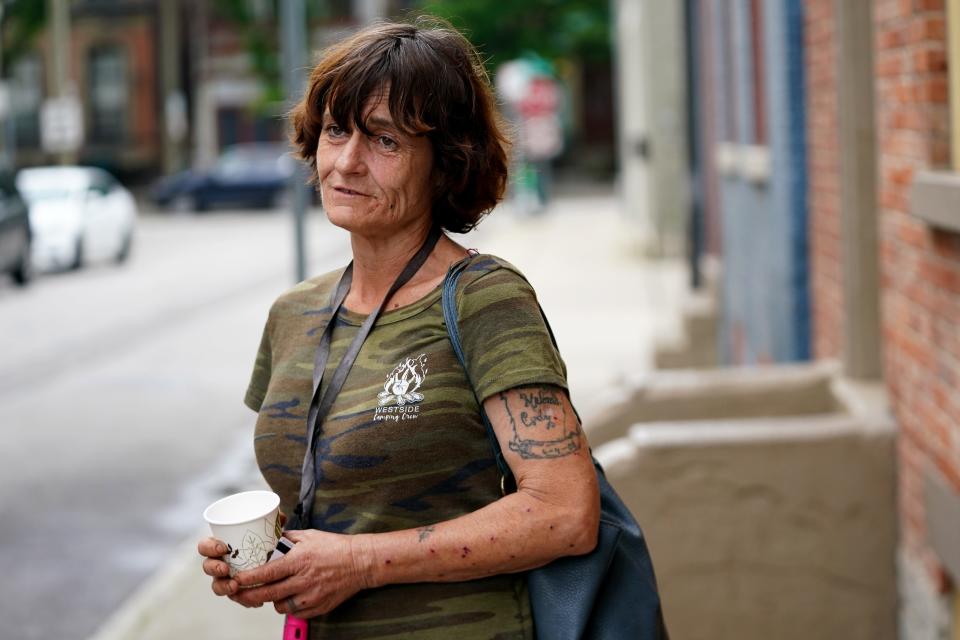

“That’s gonna send us right back into it,” said Wilson, who was addicted to heroin for 12 years and has been sober for three.
She’s concerned, too, for residents who use wheelchairs and walkers, especially during the winter.
“You gotta go up the hill to go in there,” she said. “It is slippery as hell.”
She tears up at the thought of her health center taken away. “It’s nice. It is quiet,” she said. “There’s no drug dealers.”
Wilson trusts the doctors at Bobbie Sterne for a reason.
Years ago, when her 2-year-old daughter suddenly had an allergic reaction to peanut butter, Wilson panicked and ran to the clinic with her daughter in her arms. There, the doctors helped bring down the swelling in her throat.
“The doctors are reliable; they are trustworthy,” she said. “They listen to you.”
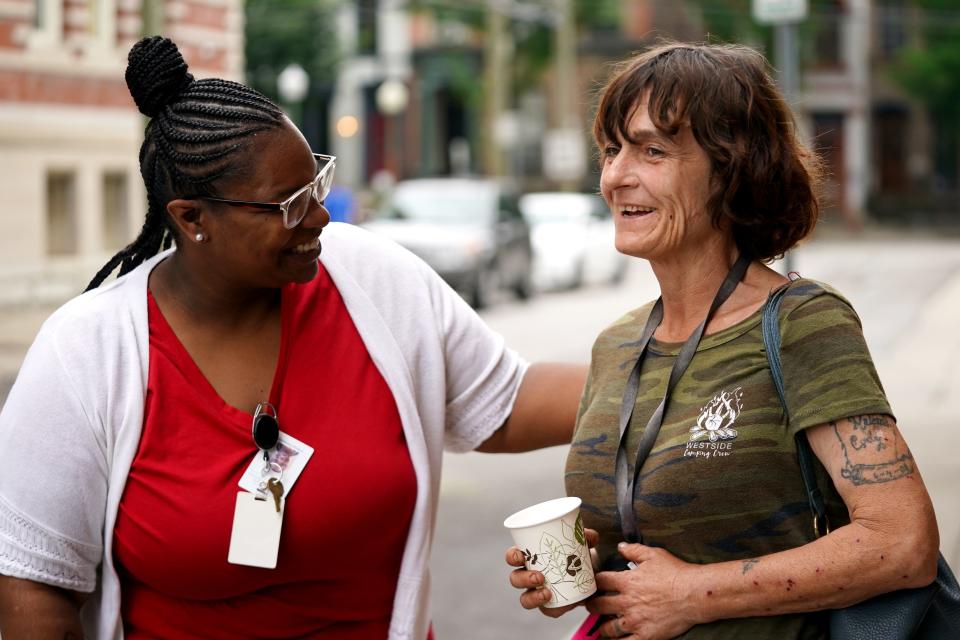

That trust is critical for a population that often has trouble visiting a doctor in the first place, according to Georgine Getty, executive director of Our Daily Bread, a soup kitchen in Over-the-Rhine that serves mostly unhoused people.
“They have so much on their plate already,” she said. “There’s kind of a sense of ‘well, if I go to the doctor, they’ll just give me bad news.’ Or, ‘they’ll give me a prescription for something maybe I can’t afford.'”
“I would just hate to see those existing relationships that they have be discontinued.”
And with the recent increase in homelessness in Cincinnati, Getty says it’s important for the soup kitchen to remain in Over-the-Rhine.
“Our numbers are up 30% over what they were pre-COVID,” she said. “So there are certainly still a lot of people in the area who are in need of services.”
Health officials say there’s no timeline for a decision
Since February, The Enquirer has called and emailed the city health department multiple times to ask when officials will decide what to do with its community health centers.
Each time, the department did not provide specifics. “There is not a defined timeline,” Salter, assistant to the health commissioner, said in an email, citing the health department’s focus on consolidating administrative buildings first.
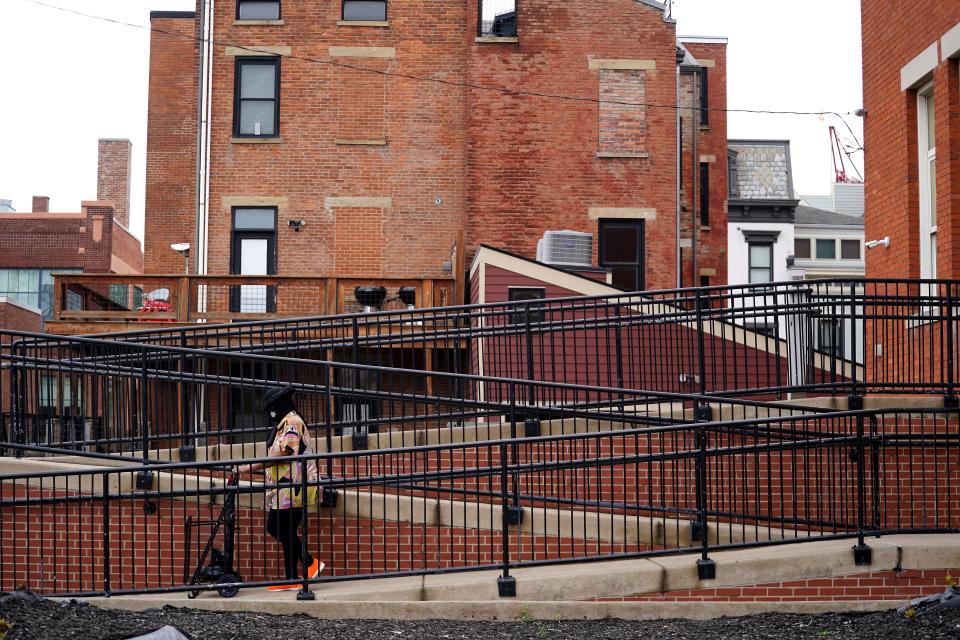

In a June phone call with the Enquirer, Dr. Grant Mussman, Cincinnati health commissioner, said it’s safe to say that no decision will be made before the end of the year, though he doesn’t have details beyond that.
“We don’t even have the budget right now,” Mussman said. “So we don’t have dollars to proceed at this point.”
Normally, the health centers are funded by revenue brought in by operations – but how the potential relocation will be funded is still up in the air, along with the process for making the decision.
Mussman also cautioned that the numbers calculated by Jensen Partners – The Enquirer found low estimates of savings created by moving or closing the centers to be around $9.2 million – “include a lot of assumptions about cost so require a grain of salt.”
“Our goal is definitely to provide the best health care for the community,” he said. “We’re very concerned about what our patients and communities want.”
Getty sees the need for more services in the West Side but doesn’t think they should come at the expense of those living in Over-the-Rhine.
“The West End needs services too,” she said. “I’m just wondering if they could find a way to make it a ‘both and’ rather than an ‘either or.’”
Pondering the options, Elkins of the Jimmy Heath House put it this way: “If it’s working, why fix it?”
This article originally appeared on Cincinnati Enquirer: Cincinnati residents may lose one of their only health clinics
Source Agencies

